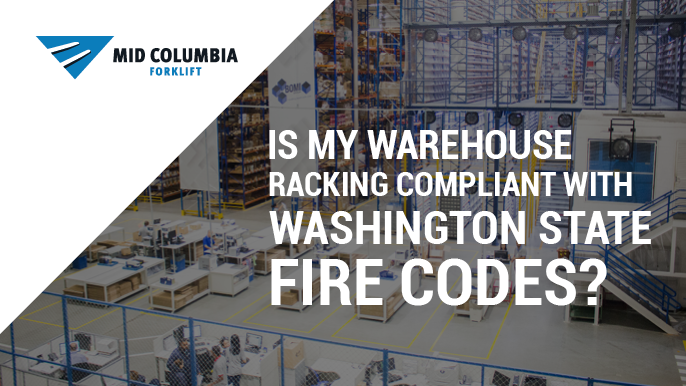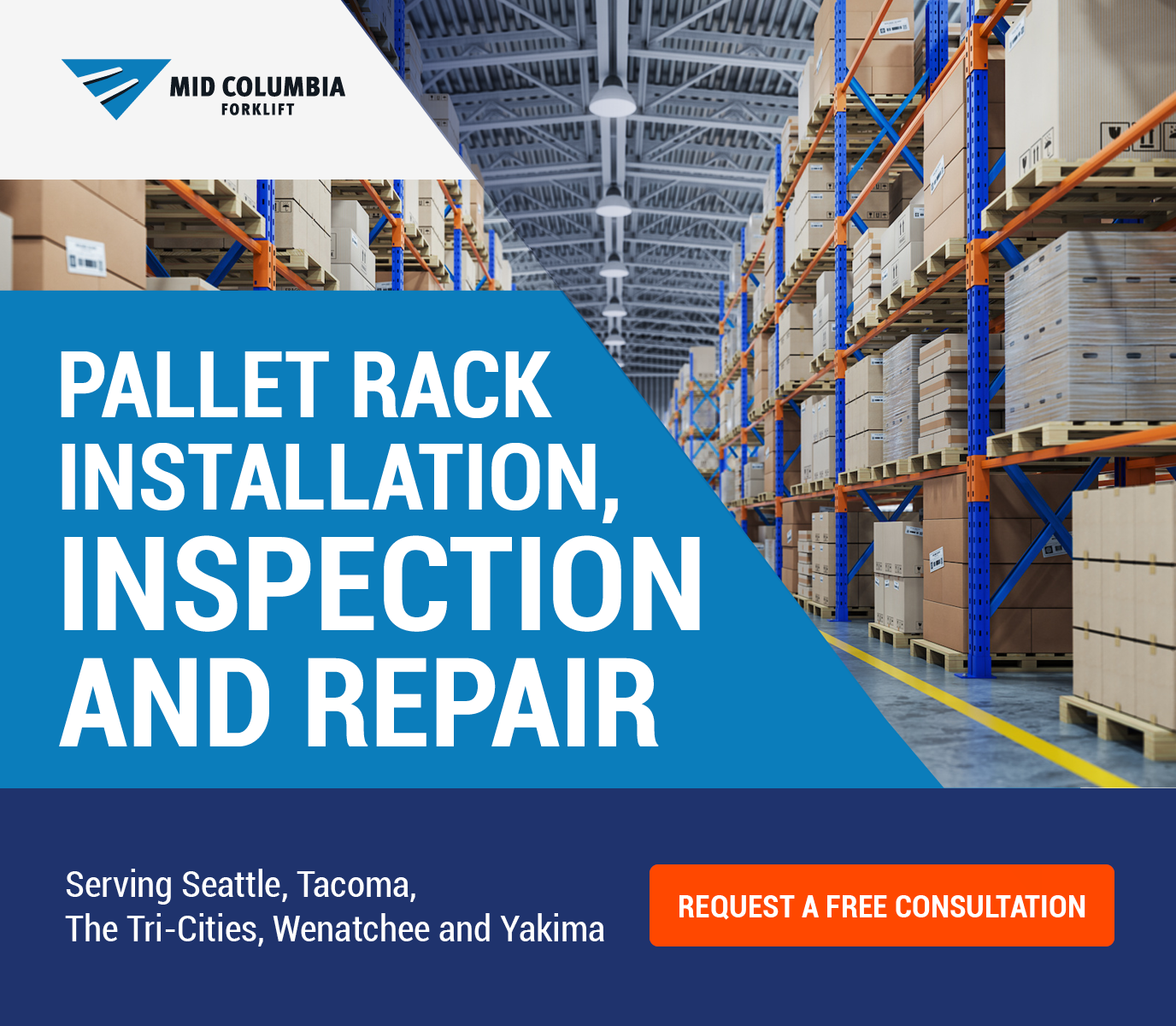Is My Warehouse Racking Compliant with Washington State Fire Codes?
by Ryan Oshman, on January 7, 2020 at 6:57 AM

No matter the size of your warehousing operation, maintaining compliance with local and federal fire codes is crucial. By ensuring you meet standards set by OSHA and your local, municipal, and Washington state regulations, you can create improved safety conditions and procedures for your employees.
Much of these fire codes focus on maximizing efficiency for your emergency sprinkler system. By meeting these standards, you can reduce risks of damage to your products, warehouse, employees, and business.
Code-compliant warehouse racking
While the historic trend has been to use uniform spacing between pallets and upright frames, the National Fire Protection Association now requires a six-inch “flue space” between loads in a rack. This requirement helps reduce fire risks and allows sprinkler systems to properly reach fire sources, but also creates additional work when installing your racking and support beams for pallet locations. This standard is a good rule of thumb, but you should verify the fire code used by your local building department to ensure your racking is compliant. Other requirements for racking and product storage include:
- Maintain at least an 18 inch gap below the sprinkler system heads.
- Remember that flue space is measured by the pallet load, not the pallet itself.
- There should also be at least 3 inches of transverse flue space between pallet loads and upright frames.
Certain codes require in-rack sprinkler systems, depending on product spacing, beam length, and more. Consult your local fire codes and warehousing specialists to determine the right solution for your business. You should also ensure your operators are aware of the proper pallet locations and standards for your warehouse during your training and certification process to ensure compliance at each stage of your operation.
Warehousing best practices for fire code compliance
Washington fire code compliance extends beyond warehouse racking and pallet spacing, however. Other best practices for meeting fire code safety requirements are:
- Meeting minimum unobstructed aisle width requirements for manual restocking (24 inches) and mechanical restocking (44 inches).
- Prohibit smoking entirely within your warehouse and maintain proper signage.
- Store liquid propane fuel tanks at least 20 feet away from fire exits and do not exceed 300 pounds per warehouse.
- Dead end aisles should not be longer than 50 feet.
Local fire codes throughout Washington can vary in their standards for battery charging areas, automated material handling operations, and hazardous material storage - consult your local building code office or warehousing specialist to ensure compliance.
Key Local Fire and Building Codes in Washington State
If you’re working in a warehouse setting in Washington State, knowing your applicable local fire and building codes is essential for your success. Here are some of the key local fire and building codes in Washington that are covered by Mid Columbia Material Handling:
Yakima, WA Fire Code
Working in Yakima, Washington? Check the Yakima fire code for more information.
Wenatchee, WA Fire Code
Brush up on the details available in the Wenatchee fire code to stay compliant.
Pasco, WA Fire Code
The Pasco fire code governs businesses operating in that area.
Auburn, WA Fire Code
Ensure your business complies with Auburn fire code if it applies.
Local Fire Codes in Washington State
Washington state fire codes vary from location to location - be sure you are aware of which ones apply to your business.
As always, you should consult your local code authority and a licensed expert to ensure your warehouse is code-compliant across local, municipal, state, and national standards. Whatever your challenge in the Pacific Northwest may be, the material handling experts at Mid Columbia Forklift are ready to help. Contact us today to learn how we can help ensure your warehouse configuration is efficient and compliant with all federal and local fire codes.
Further Reading:
Maintenance Tips for Washington Port Equipment
Equipment Challenges for Washington’s Forest Products Industry
4 Key Material Handling Configurations for Washington Port Efficiency




